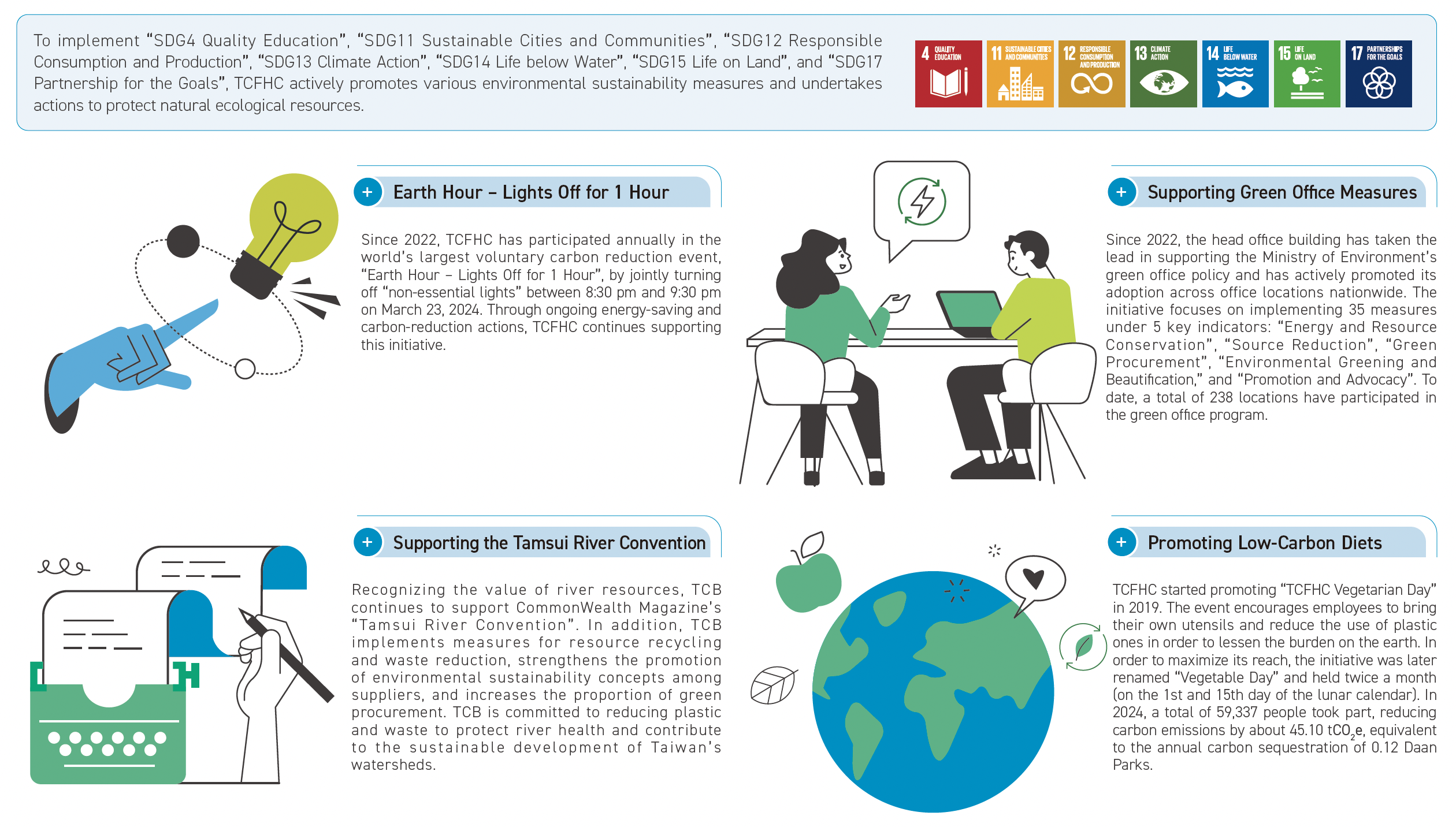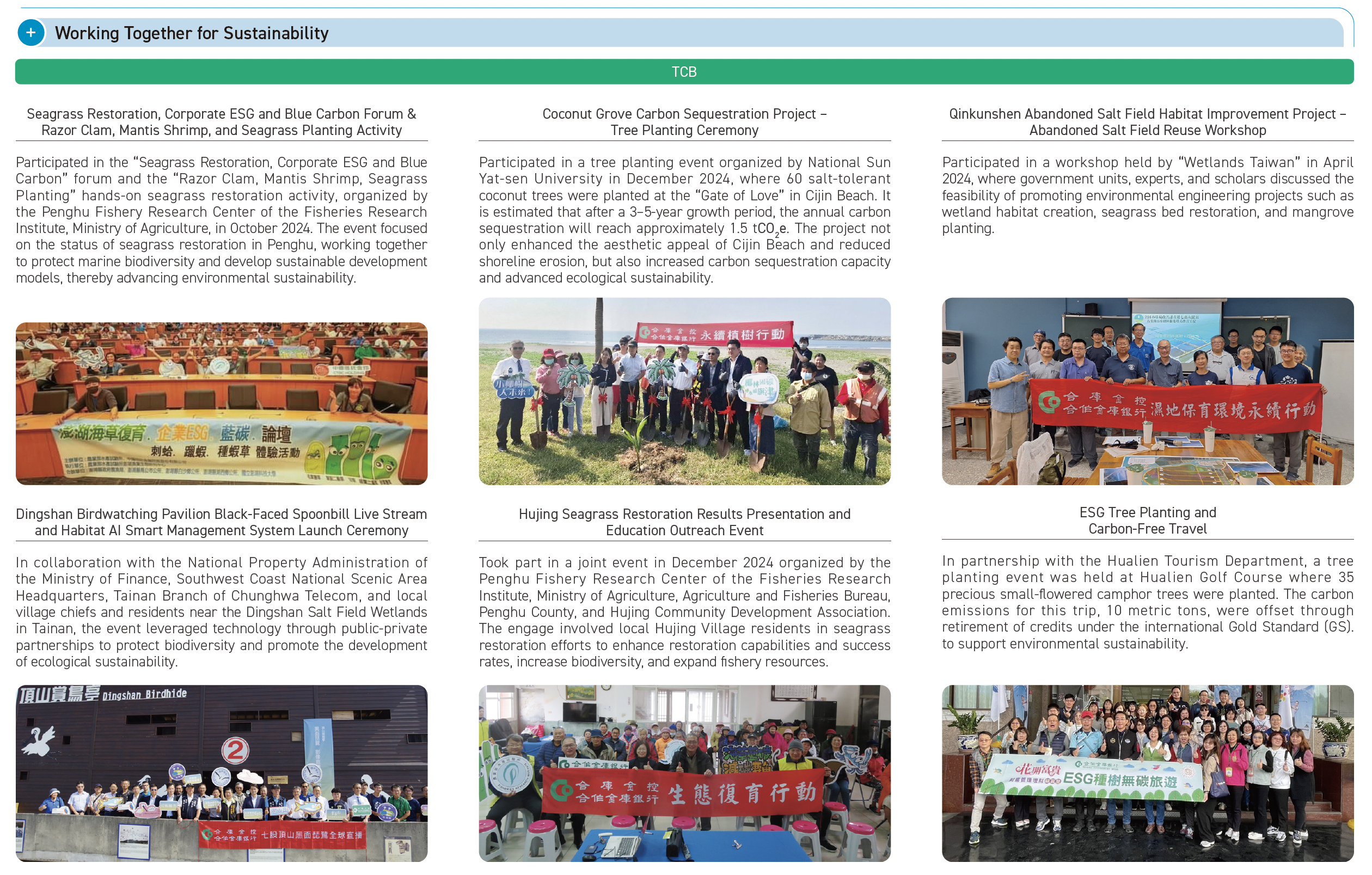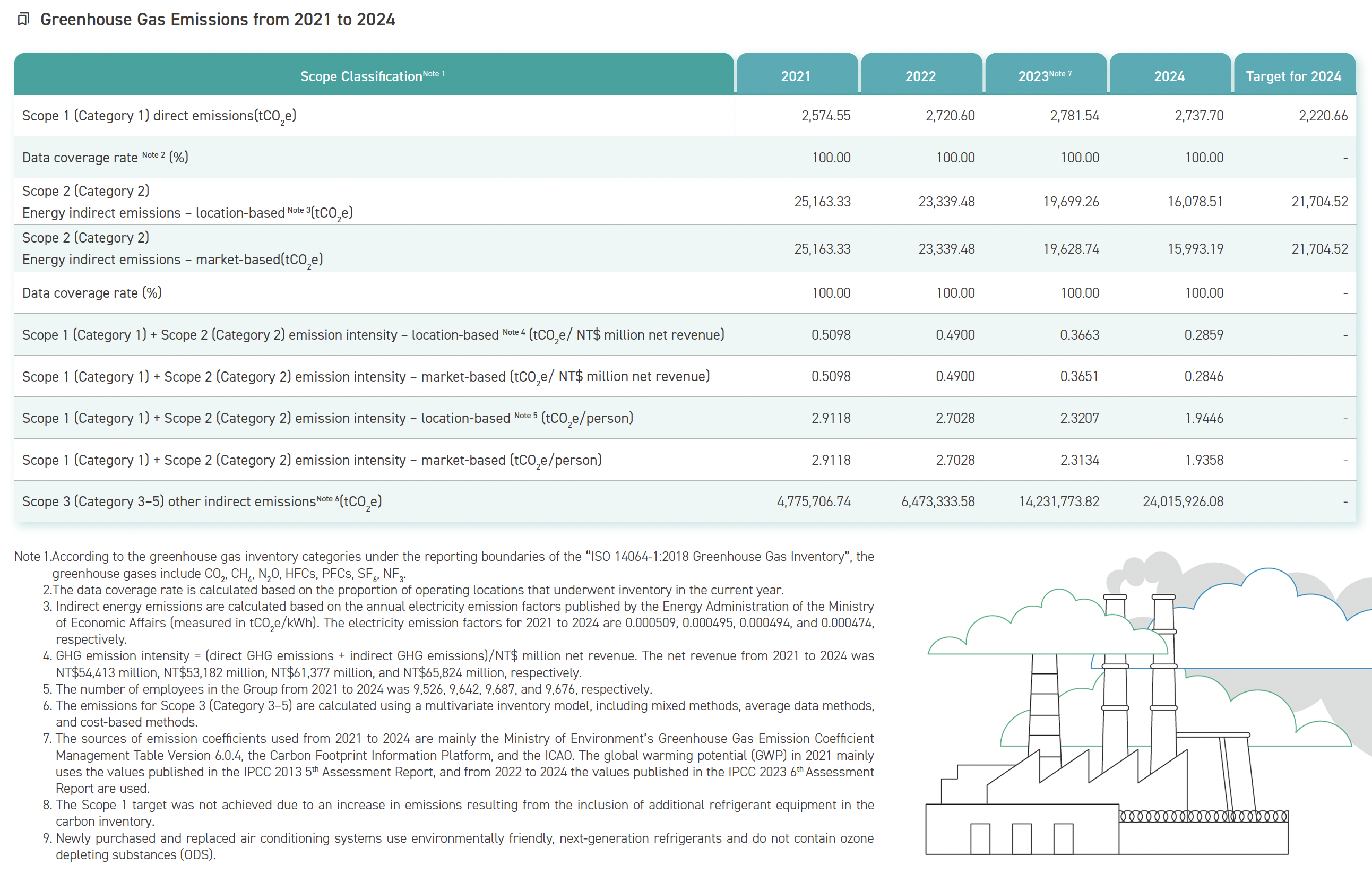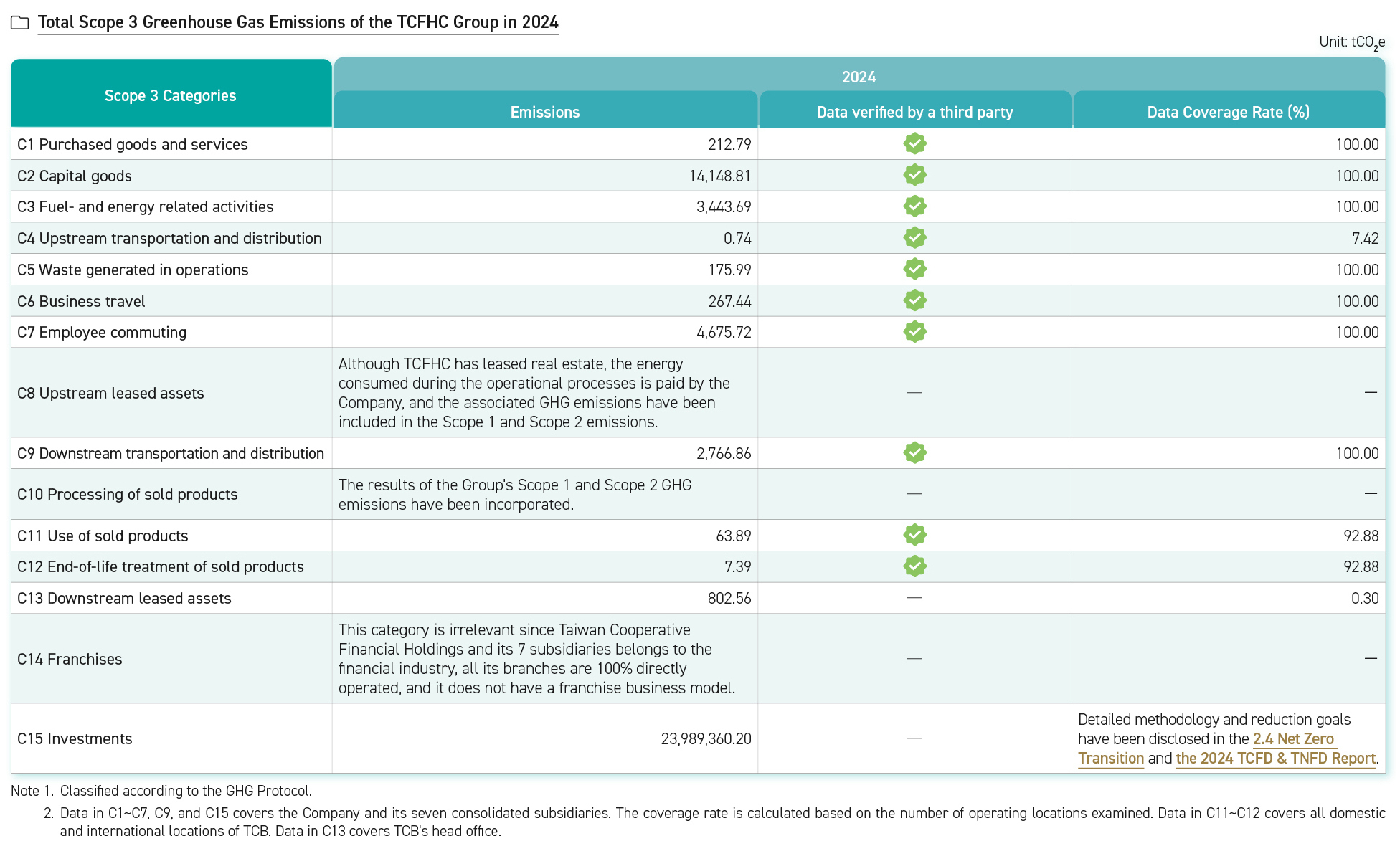Environmental Sustainability Management Strategy
In fulfillment of the 2050 net-zero emission goal and the SDGs, TCFHC implements green operations and reduces the impact of its business activities on the environment across 6 areas, which are “Energy Conservation and Carbon Reduction”, “Energy Management”, “Water Resources Management”, “Waste Management and Circular Economy”, “Environment and Biodiversity Education”, and “Environment and Biodiversity Conservation”. At the same time, TCFHC has set short-, medium-, and long-term goals for environmental sustainability and fullfills green operations by tracking implementation status every quarter and conducting review meetings every 6 months to improve management measures on a rolling basis.
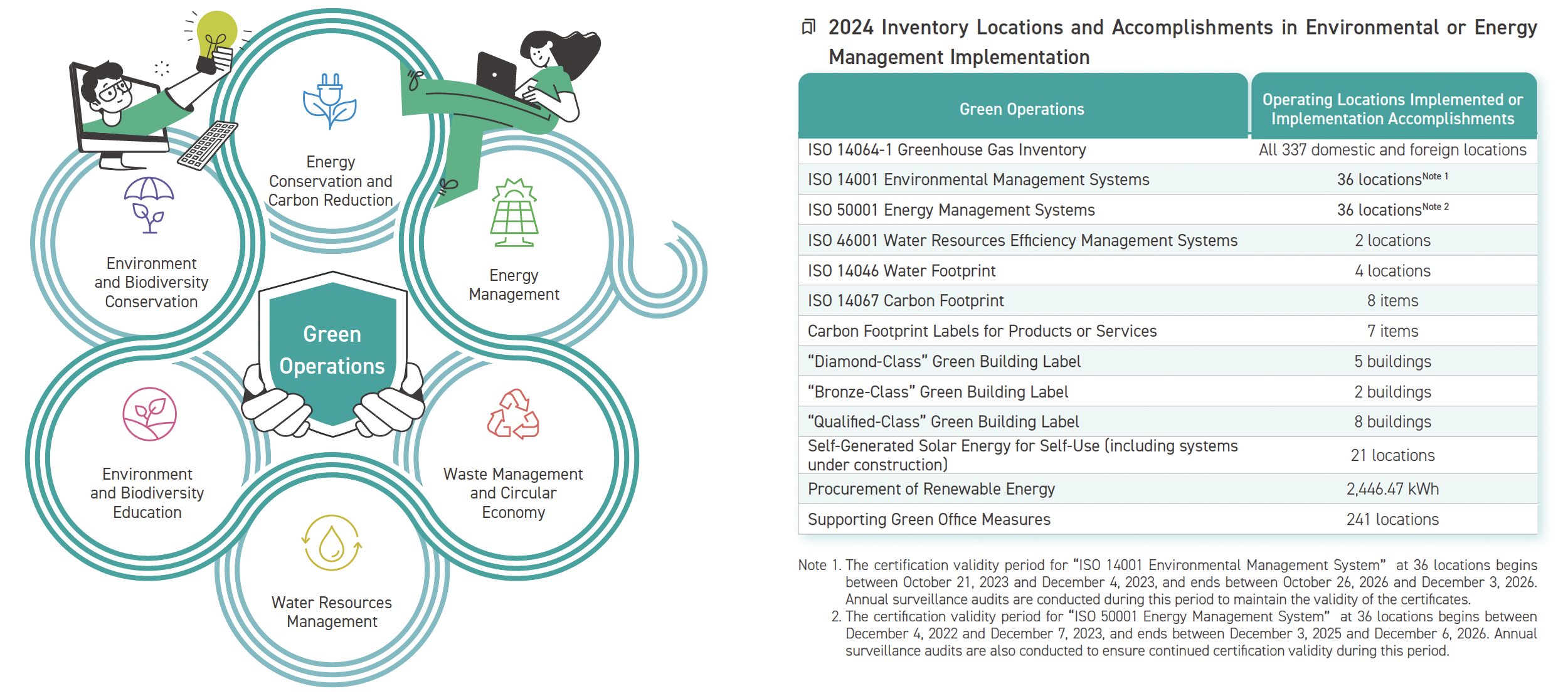
To deepen environmental sustainability efforts, TCFHC established the Environmental Sustainability Taskforce under the Sustainable Development Committee. TCB, on the other hand, became the 1 st state-owned bank to set up the “Environmental Sustainability Section” under the Administration Department, taking charge of the Environmental Sustainability Taskforce of TCFHC. We use a vertical integration model to plan environmental sustainability affairs, plan to mitigate or adapt to the impacts of climate change, and implement the Group’s low-carbon operations.
Facing the impact of global warming and climate change, TCFHC fulfills its environmental sustainability commitments and responsibilities, and has formulated the “Environmental Sustainability and Energy-Related Policies” as a way to set environmental and energy goals, establish a corporate green culture, implement green procurement, and strengthen the understanding of sustainable development. We actively respond to the carbon emission reduction path, align with the international net-zero trend, and enhance climate change resilience.
Energy Conservation and Carbon Reduction
Over the past few years, global warming has changed the ecological environment, and frequent extreme weather events are threatening human survival as well. If we continue to ignore this imminent crisis and persist in unrestrained resource consumption, climate change will worsen and eventually lead to irreversible damage to the ecosystem. For the sake of mitigating the impacts of climate change, the Group proactively manages greenhouse gas emissions and is devoted to joining the global effort to limit global warming within 1.5 °C. We used the verification results from completing the “ISO 14064-1 Greenhouse Gas Inventory” at all domestic and overseas locations in 2021 as the base year to set a science-based target (SBT), which was reviewed and approved in 2023. The Group’s own operations (Scope 1 plus Scope 2) will reduce absolute emissions by 50.4% in 2032 compared to the base year (2021), with an average annual decrease of 4.58%, 41.24% reduction target by 2030 compared to 2021 baseline, and the reduction target for 2024 is 13.75% compared to 2021.
TCFHC continues to implement energy conservation and carbon reduction by adopting multiple ISO international standards for verification, promoting green procurement and green office measures, obtaining green building labels, and leveraging government energy-saving diagnostic services. Additionally, by introducing measures such as an internal carbon pricing mechanism, we actively internalize the external costs of greenhouse gas emissions, strengthen the identification and management of risks and opportunities related to carbon emissions, and make strides toward low-carbon and sustainable operations.
GHG Emissions
To enhance the automation and intelligence of managing GHG emissions across the entire Group, we have, since 2023, leveraged technology to assist in carbon emissions data inventory. In 2024, we completed the “ISO 14064-1 Greenhouse Gas Inventory” across 337 domestic and international sites, covering Scope 1 to Scope 3 emissions. The combined GHG emissions from Scope 1 and Scope 2 have been reduced by approximately 32.16% compared to the baseline year (2021), achieving the reduction target of 13.75%. Additionally, we participate annually in the international Carbon Disclosure Project (CDP), actively taking steps to address environmental issues. In 2024, we attained the “A List – Leadership Level” recognition. We have also implemented the “ISO 14001 Environmental Management Systems”, “ISO 50001 Energy Management Systems”, and “ISO 46001 Water Efficiency Management Systems”, using the Plan-Do-Check-Act (PDCA) cycle to effectively manage resource consumption and reduce carbon emissions.
Performance of Energy Conservation and Carbon Reduction
Starting in 2024, TCB launched the “Voluntary Reduction Project for Replacing High-Efficiency Lighting and Air-Conditioning Equipment at the Beidou, Pingjhen, Fuxing, Si Taichung, and Nanxing Branches”. By replacing the existing lighting and air-conditioning equipment at these 5 branch offices, the project aims to improve energy use efficiency, conserve electricity, and reduce GHG emissions. The project was approved by the Ministry of Environment on January 6, 2025, and the accounting period spans from January 6, 2025, to January 5, 2035. It is estimated to reduce GHG emissions by 240 tCO 2 e.
In 2024, 3 projects were implemented: “TCB Energy Conservation and Carbon Reduction”, “Replacing and Reducing Lightning Fixtures”, and “Air-Conditioning Equipment Energy Conservation Improvement”. These initiatives focused on both hardware and software upgrades, adjustments to management practices, and raising employees’ environmental awareness, encouraging energy conservation and carbon reduction in daily office routines. The total investment amounted to approximately NT$2.13 million, resulting in an estimated electricity savings of around 1,898,159 kWh and a reduction in carbon emissions of approximately 899.73 tCO 2 e, equivalent to the annual carbon absorption of 2.43 Daan Parks Note1 . The projected cost savings are NT$7.22 million, with an average payback period of just 0.30 years Note2 .
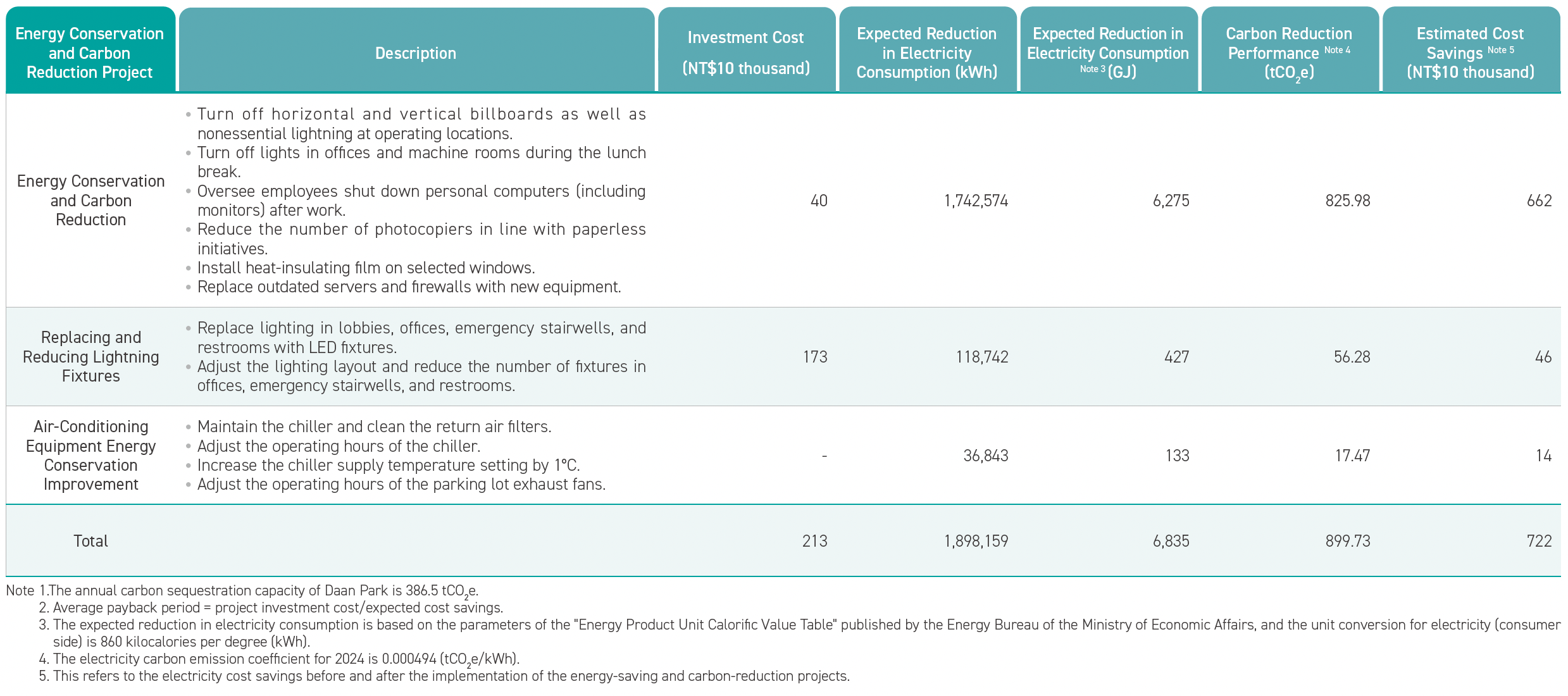
Internal Carbon Pricing
To implement effective carbon reduction management and reinforce the concept of “putting a price on carbon”, TCB has been calculating an Internal Carbon Price (ICP) since 2022. By internalizing the external costs of greenhouse gas emissions, TCB assesses the carbon costs associated with its operations and incorporates them into future investment considerations for energy-saving and carbon-reduction projects. This approach enhances the Bank’s carbon risk management capabilities and strengthens its climate resilience. At the same time, TCB actively adopts low-carbon operational measures and improves energy efficiency to further enhance carbon reduction effectiveness. TCB adopts an implicit pricing method, referencing the energy-saving benefits, purchase costs, and estimated service life of equipment to calculate its internal carbon price, which is used as a reference in procurement decision-making. The internal carbon price is reviewed annually on a rolling basis. In 2024, the average internal carbon price is NT$6,663.01 per metric ton, with a range between NT$4,939 and NT$7,566.
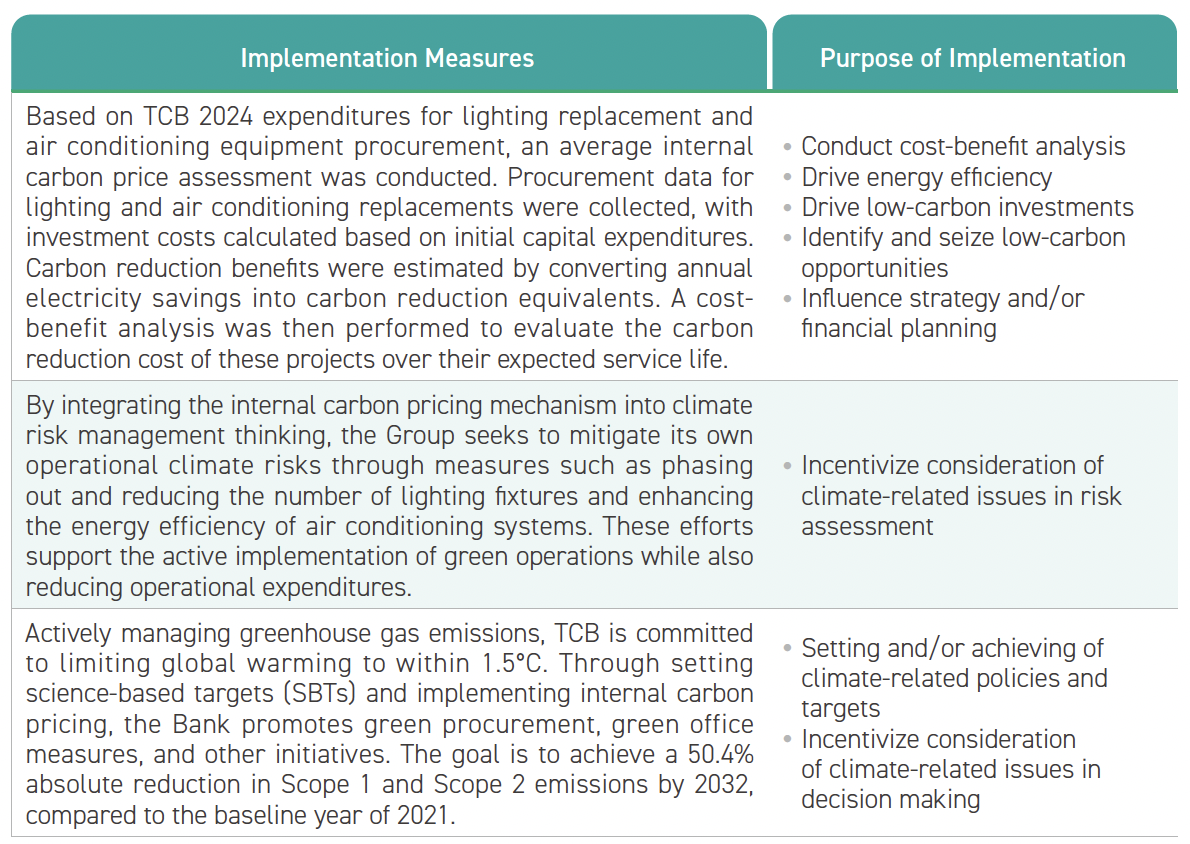
Carbon Credits
In order to implement carbon reduction and support national climate actions, TCFHC actively participated in the trading of the 1 st batch of carbon credits on the Taiwan Carbon Solution Exchange in 2023. The purchased carbon credits will continue to be used to promote carbon reduction and carbon neutrality for the Group and its subsidiaries. Through the purchased carbon credits plan, TCFHC promotes the achievement of several SDGs, and while reducing corporate carbon emissions, also realizes universal values such as social inclusion and climate equity.
Carbon Footprint and Carbon Labels
In order to achieve a sustainable consumption and service model for a low-carbon economy, the life cycle assessment method is adopted to enhance transparency in the input and output of product supply chains and services, energy and resources, and sources of carbon emissions with potential environmental impacts. The entire Group has passed external verification for “ISO 14067 Carbon Footprint” and obtained a total of 8 verification statements. In addition, a total of 7 carbon labels for products or services have been obtained. These include TCB’s “World Card”, “LOHAS Card”, “Head Office (Business Department) Counter Service”, “Financial Online Service/Online Banking Front End – General Login Overview”, CAM’s “Self-Owned Real Estate Sales Service”, BNP TCB Life’s “Personal Insurance Service Policy”, and TCS’s “Online Investment and Wealth Management Services”. In the future, TCFHC will continue to examine the carbon emission hotspots of its operating products or services provided, optimize energy conservation and carbon reduction actions, and strive to establish low-carbon operations or service models.
Green Buildings
The head office building of TCB was constructed based on the 4 core principles of green architecture: “ecology, energy conservation, waste reduction, and health”. It incorporates a variety of environmentally friendly and energy-saving designs that align with green building standards. In 2018, it received the EEWH Silver Label from the Ministry of the Interior. In 2023, it was further honored with the Silver Award at the Ministry of Economic Affairs’ Energy Conservation Benchmark Awards and the Excellence Award in Category A in Taipei City’s Zero-Carbon Benchmark Awards. In 2024, the building achieved the EEWH Diamond Label from the Ministry of the Interior and was once again recognized by the Ministry as a “Level 1+ Near-Zero Carbon Building”, the highest rating in the existing Building Energy Efficiency Labeling System. In addition, to further the vision of sustainable architectural design and achieve harmonious coexistence with the planet, efforts have been made to promote the development of green buildings at other locations. As of the end of 2024, a total of 15 sites have obtained EEWH certifications (including 5 diamond, 2 bronze, and 8 certified labels).
Digital Paperless Operations
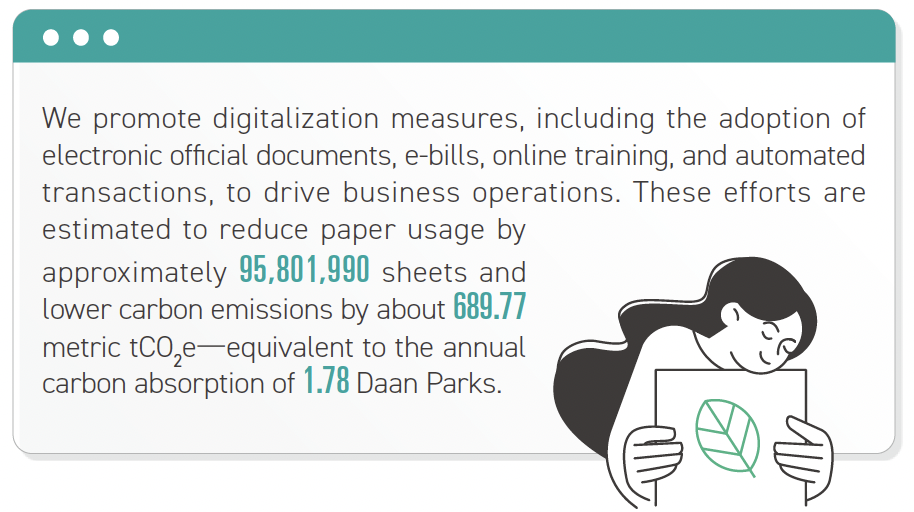
Energy Management
In order to reduce overall energy consumption, TCFHC introduced the “ISO 50001 Energy Management Systems” and through various spontaneous action plans and improvement measures, is devoted to energy conservation, energy generation, and energy procurement. These efforts aim to improve energy efficiency and increase the proportion of renewable energy used, achieve energy-conservation goals, and fulfill the responsibility of protecting the environment.
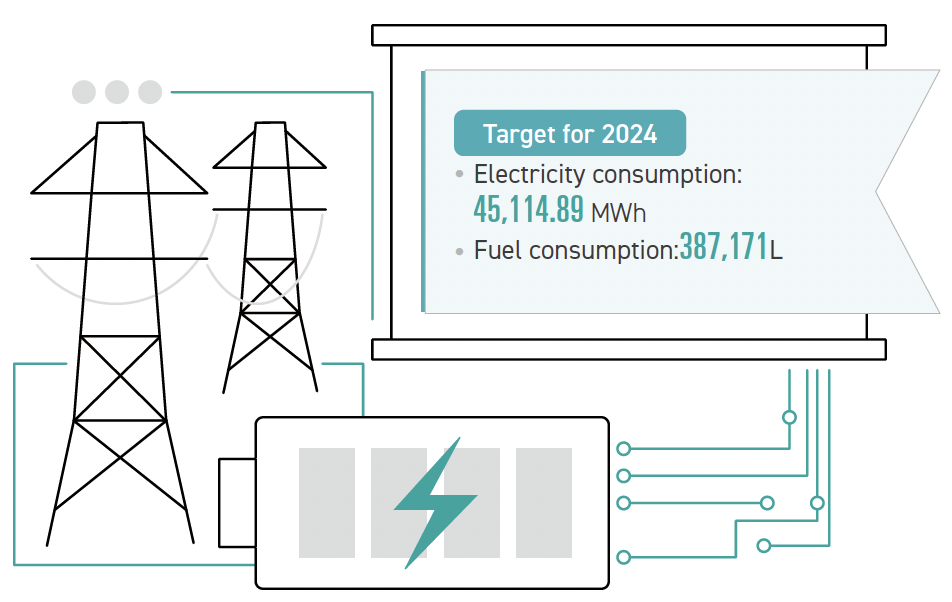
Energy Usage Overview
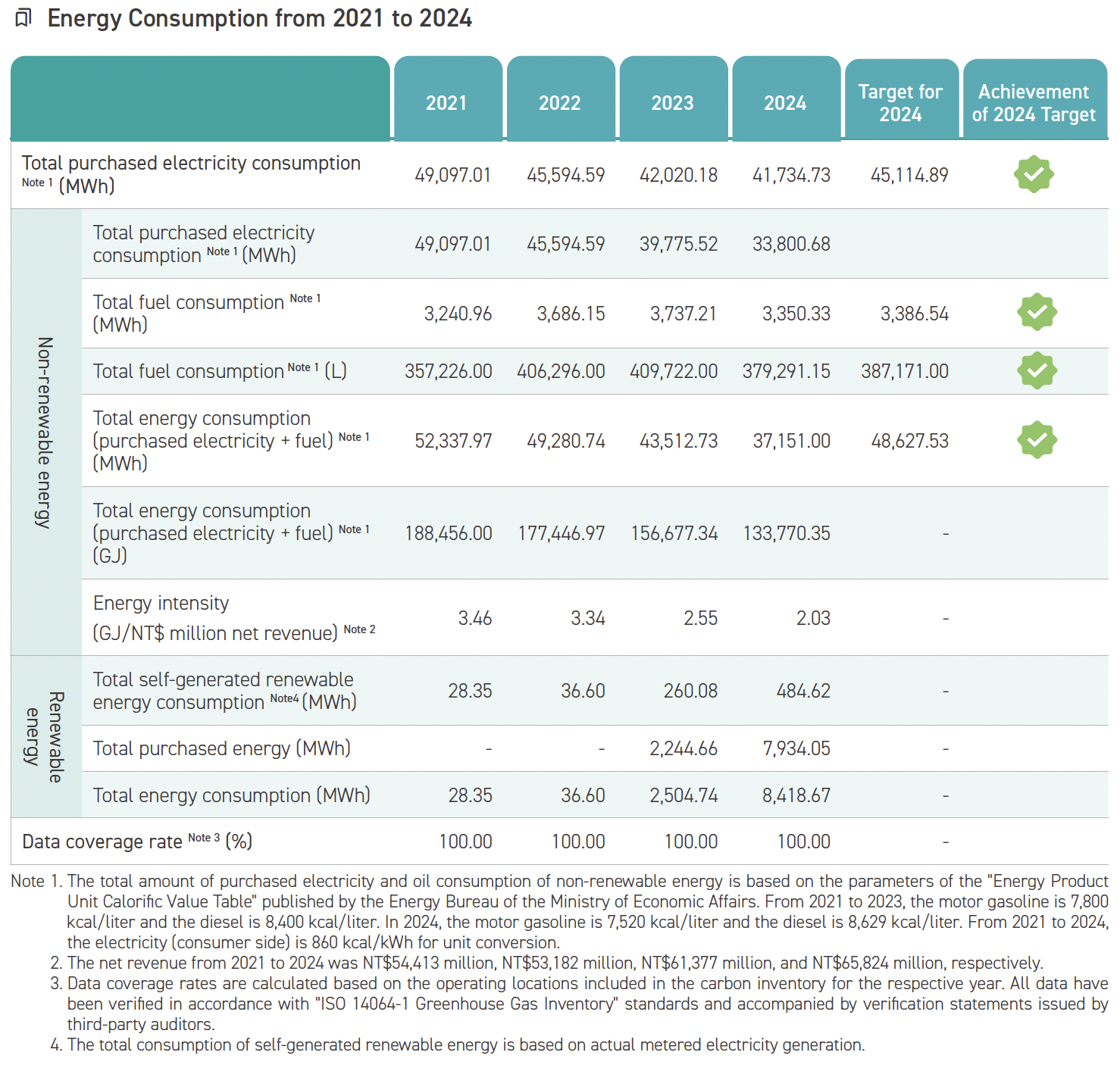
Energy Usage Management
To achieve electricity saving targets and reduce carbon emissions, in addition to actively promotes various energy-saving and carbon reduction projects, implements electricity conservation measures, and practices green office initiatives. In 2024, TCB established the "Electricity Saving Competition Incentive Program" for its business units. Annual electricity consumption reduction targets are allocated to all business units across Taiwan, with rankings based on actual electricity savings and the achievement rate of the annual reduction targets. Incentive rewards ranging from NT$6,000 to NT$60,000 are granted accordingly. In 2024, the total electricity consumption of participating domestic business units was 23,865,082 kWh, representing a reduction of 510,215 kWh (2.09%) compared to 2023. The electricity savings correspond to an estimated carbon emissions reduction of approximately 242 metric tons of CO 2 e Note , equivalent to the annual carbon sequestration of about 0.63 Daan Forest Park.
Note: The electricity carbon emission coefficient for 2024 is 0.000474 (tCO 2 e/kWh).
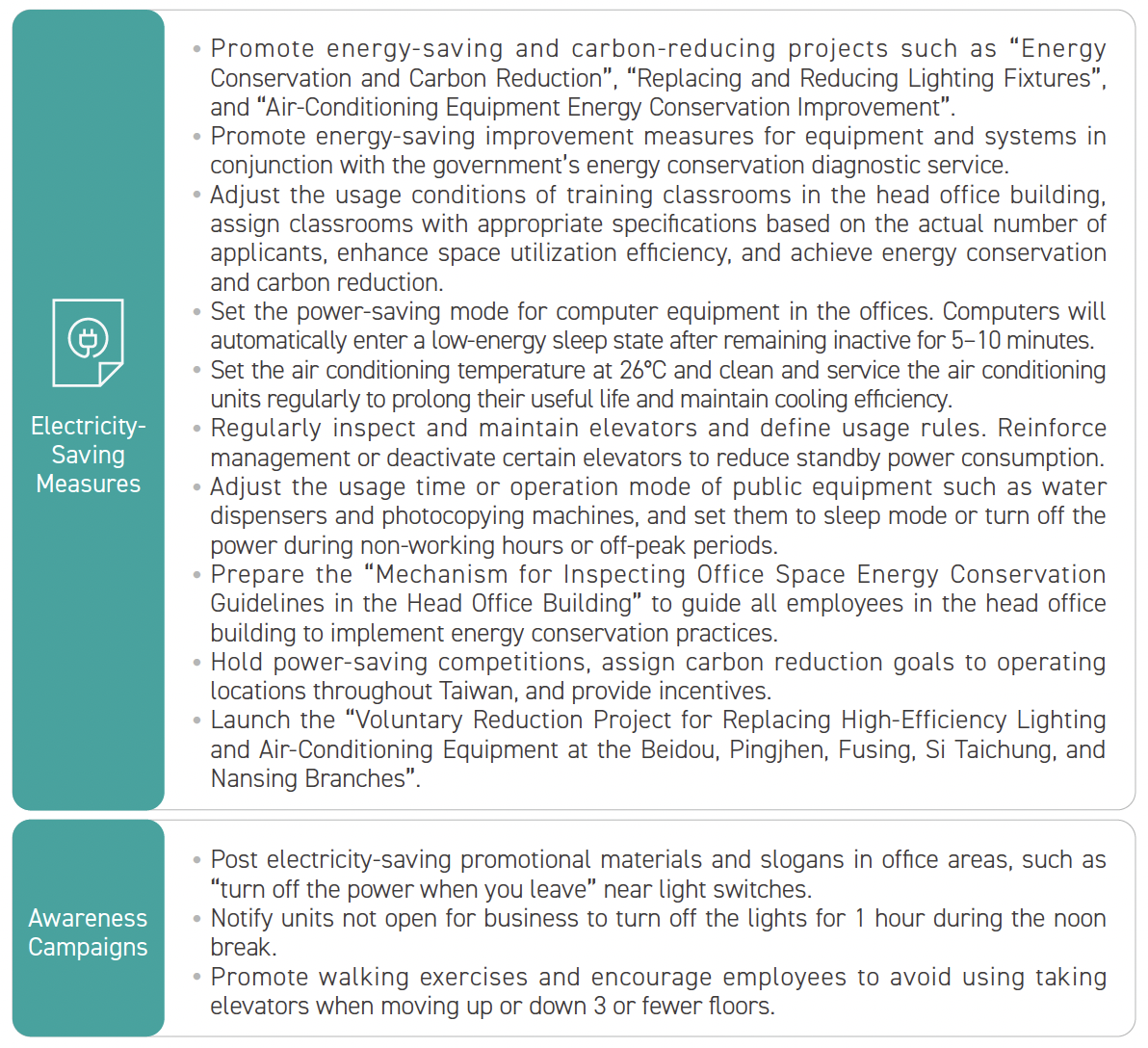
Renewable Energy Usage
In alignment with the 2050 net-zero emissions goal and energy transition policies, TCB has completed the installation of solar power systems at 17 locations, achieving a total actual electricity generation of 484,618 kWh and obtained 402 renewable energy certificates, resulting in a carbon emissions reduction of approximately 229.71 metric tons of CO 2 e, equivalent to the annual carbon sequestration of about 0.59 Daan Forest Parks. Additionally, solar power systems are under construction at 4 more locations, bringing the total to 21 locations with solar installations. The estimated annual electricity generation from these systems is approximately 861,300 kWh, potentially reducing carbon emissions by about 408.26 metric tons of CO 2 e, equivalent to the carbon absorption of 1.06 Daan Forest Parks annually. Furthermore, TCB has procured 24.4647 million kWh of renewable energy, with 7.9341 million kWh of green electricity supplied in 2024. TCB has also obtained 7,965 renewable energy certificates, corresponding to a carbon emissions reduction of approximately 3,760.74 metric tons of CO 2 e, equivalent to the annual carbon sequestration of about 9.73 Daan Forest Park. Moving forward, TCB will continue to support the national net-zero emission policy by progressively increasing the proportion of renewable energy use.
Fuel Management
In order to enable employees to practice green office habits in daily life, we are gradually replacing old official vehicles and motorcycles with high-efficiency, low-fuel-consumption vehicles and electric motorcycles. Since 2022, a total of 202 environmentally friendly or energy-certified vehicles have been leased for official use. Meanwhile, we continue to promote the principle that employees should use public transportation instead of cars and motorcycles when commuting or traveling on business, or share rides when dispatching official cars. We also encourage the use video conferencing instead of in-person meetings or training courses to reduce energy and resource consumption and lower carbon emissions.
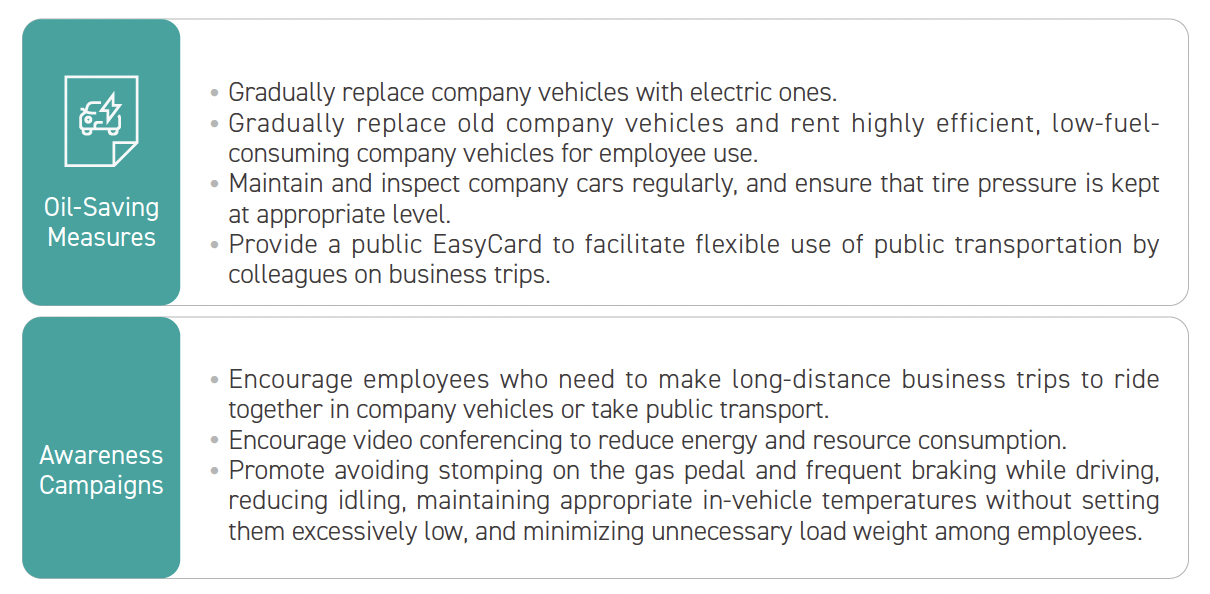
Water Resources Management
Global climate change has led to water resource scarcity, which is worsening each day. Responding to “SDG 6 Clean Water and Sanitation”, the head office building, IT Department, staff training center, and central processing center of TCB have been verified for “ISO 14046 Water Footprint”. The water footprint impact analysis helps improve water resource utilization efficiency, reduce environmental impacts related to water throughout the life cycle of products or services, and optimize water resource management.
In order to continuously reduce water consumption, the head office building and IT Department of TCB continuously introduced the “ISO 46001 Water Resources Efficiency Management System”, seeking opportunities to recycle water, improve major water facilities, and enhance water utilization efficiency through reduction, replacement, and reuse, thereby striving to achieve the Group’s annual water consumption reduction target of 1% compared to the average of the previous 3 years.
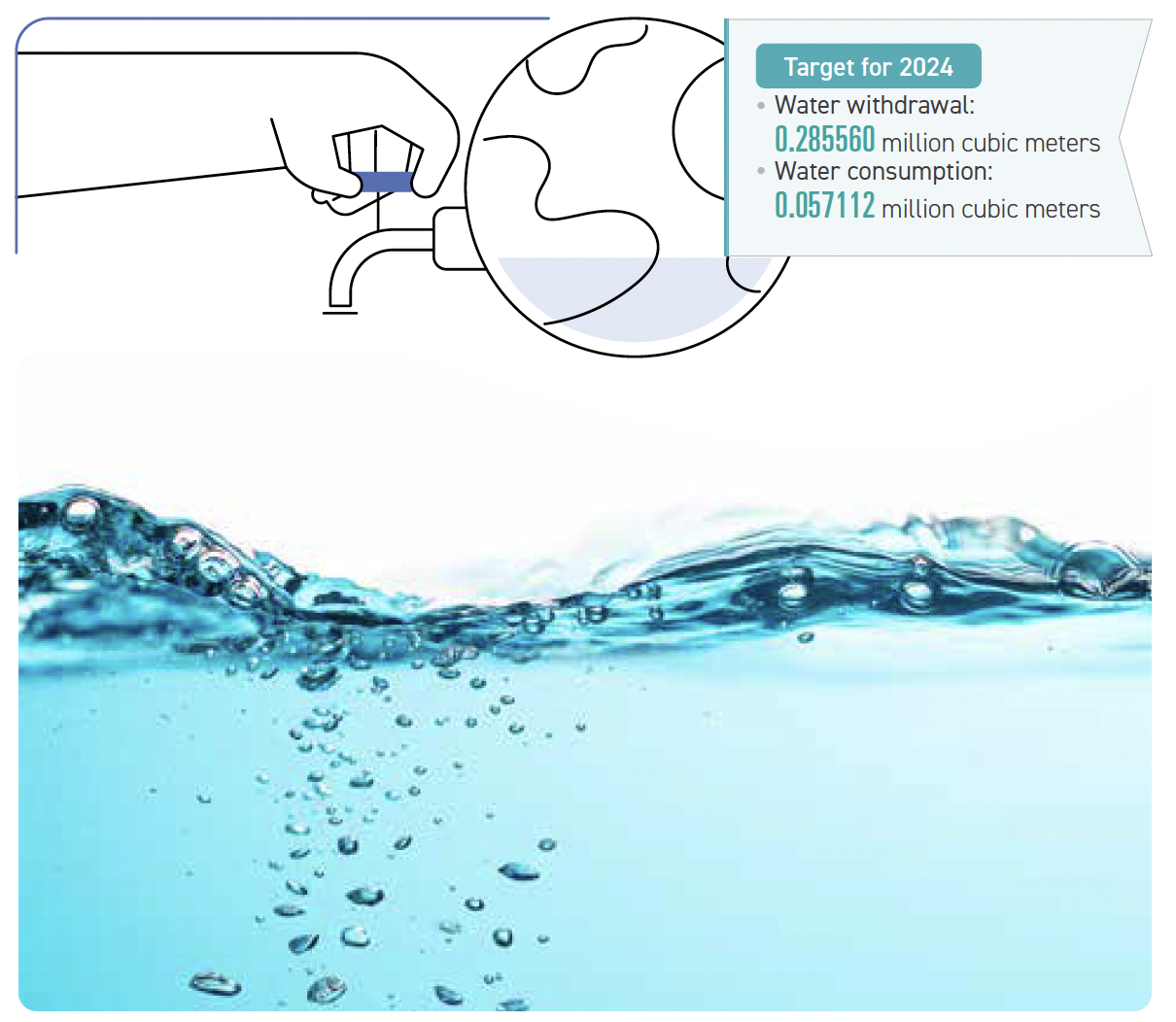
Water Resource Usage Overview
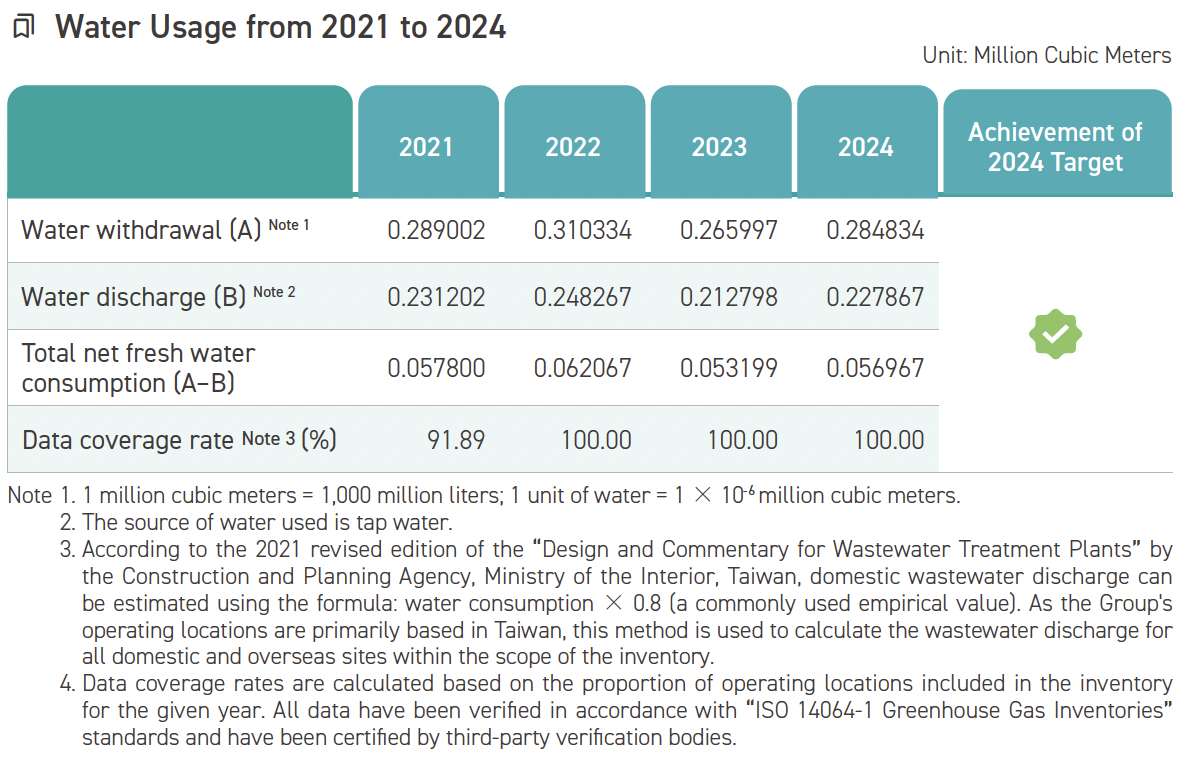
Water-Saving Measures
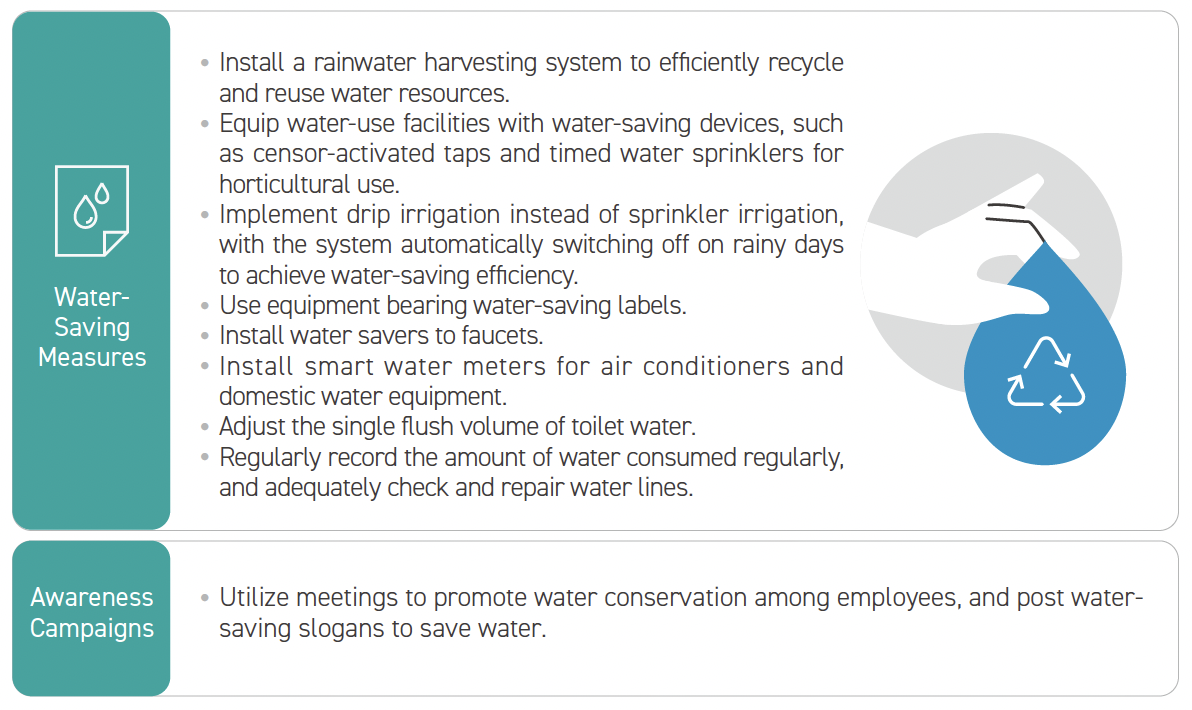
Waste Management and Circular Economy
To reduce negative environmental impacts and achieve sustainable resource management, TCFHC has implemented the “ISO 14001 Environmental Management System” and established waste management measures. Through resource recycling and reuse, green procurement, and leasing instead of purchasing, the Group promotes a circular economy. In addition to actively practicing the 3R environmental principles—Reduce, Recycle, and Reuse—to enhance the effectiveness of waste recycling and reuse, the Group has also set a new target to reduce non-recyclable waste. Starting from 2025, the Group aims to reduce the volume of non-recyclable waste by 1% annually compared to the previous year. This reflects a continuous improvement approach to waste reduction and reinforces implementation across the organization. The Group also prioritizes the procurement of environmentally friendly products, green building materials, and recycled products that carry government-recognized environmental, energy-saving, and water-saving labels.
In addition, in order to enhance the concept of circular economy and resource sustainability among employees, we continue to communicate knowledge on how to reuse resources, reduce unnecessary spending, minimize waste, and improve resource utilization efficiency through relevant conferences and educational trainings. In order to urge all units to do a good job in garbage classification and record keeping, resource recycling and waste management are included in the "Occupational Safety and Health and Safety Maintenance Supervision and Inspection Operation" and "Business Unit Self-Inspection Work Paper". At the same time, an asset sharing platform is implemented to match second-hand public property to extend the life cycle of office supplies. Second-hand item exchanges, waste battery recycling, free (waste) markets and beach cleaning activities are also organized to enhance employees' environmental awareness.

Waste Disposal Overview
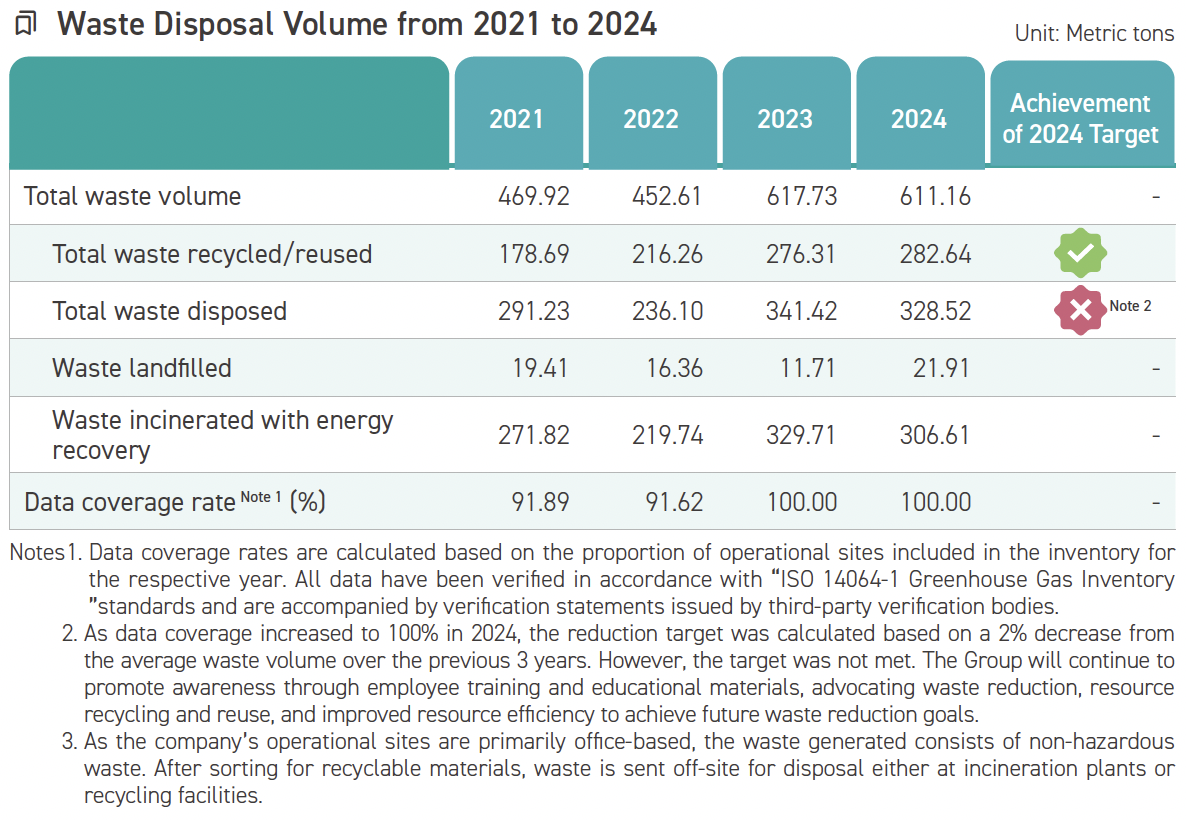
Waste Reduction Measures
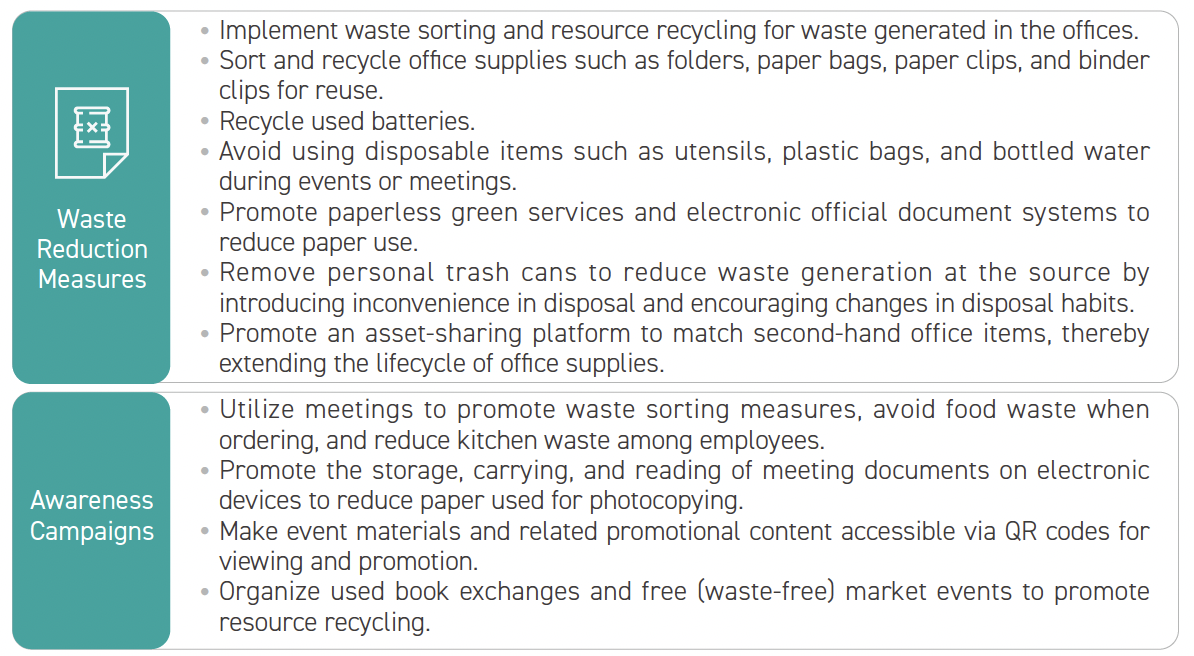
Environment and Biodiversity Education
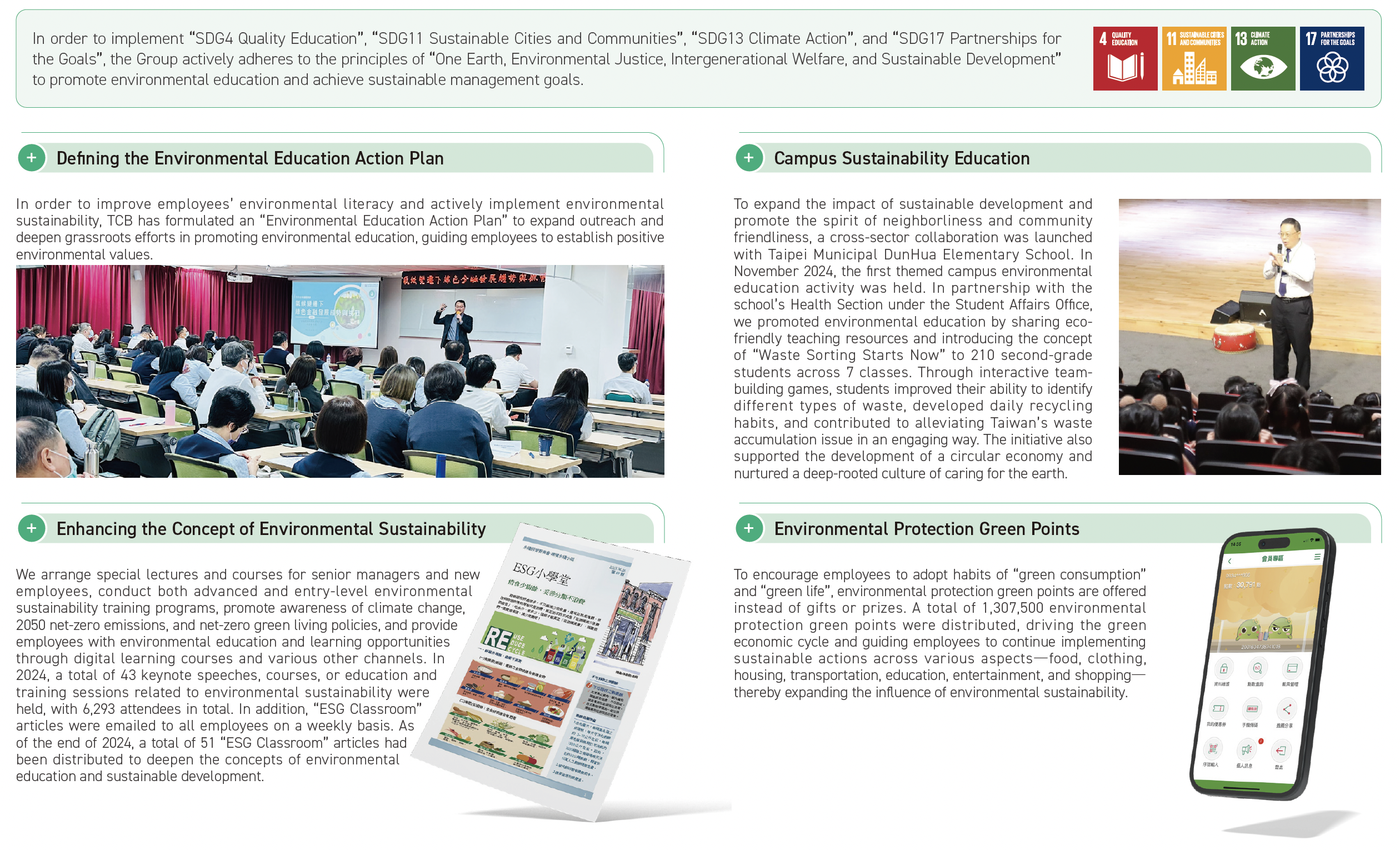
Environment and Biodiversity Conservation
